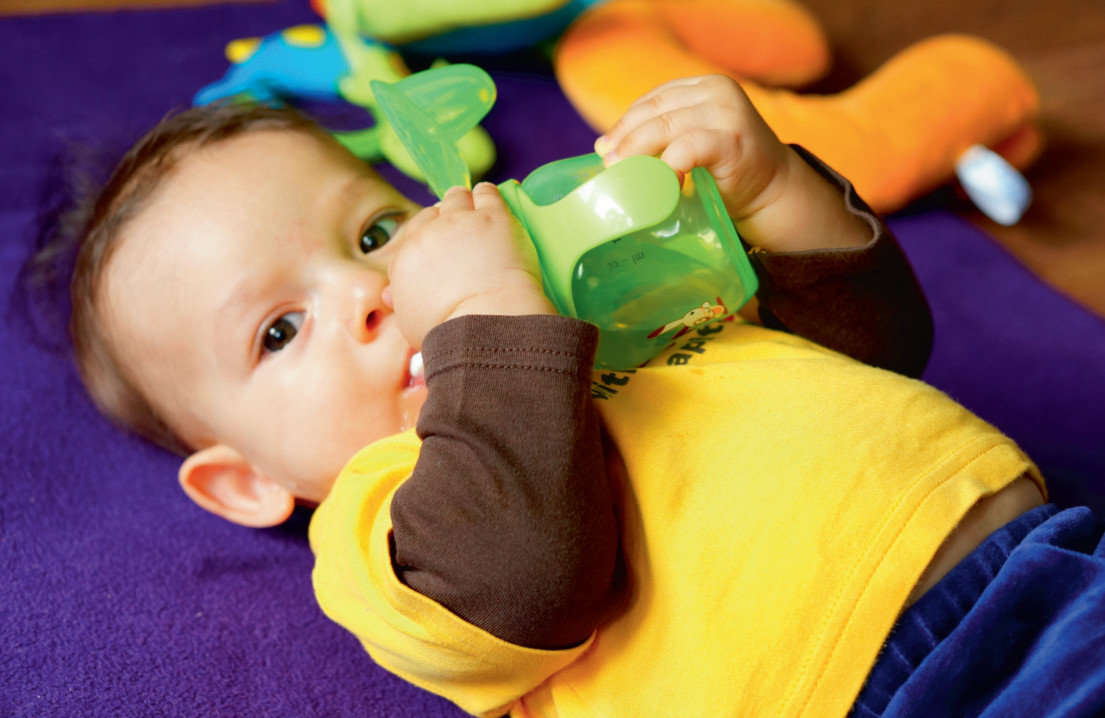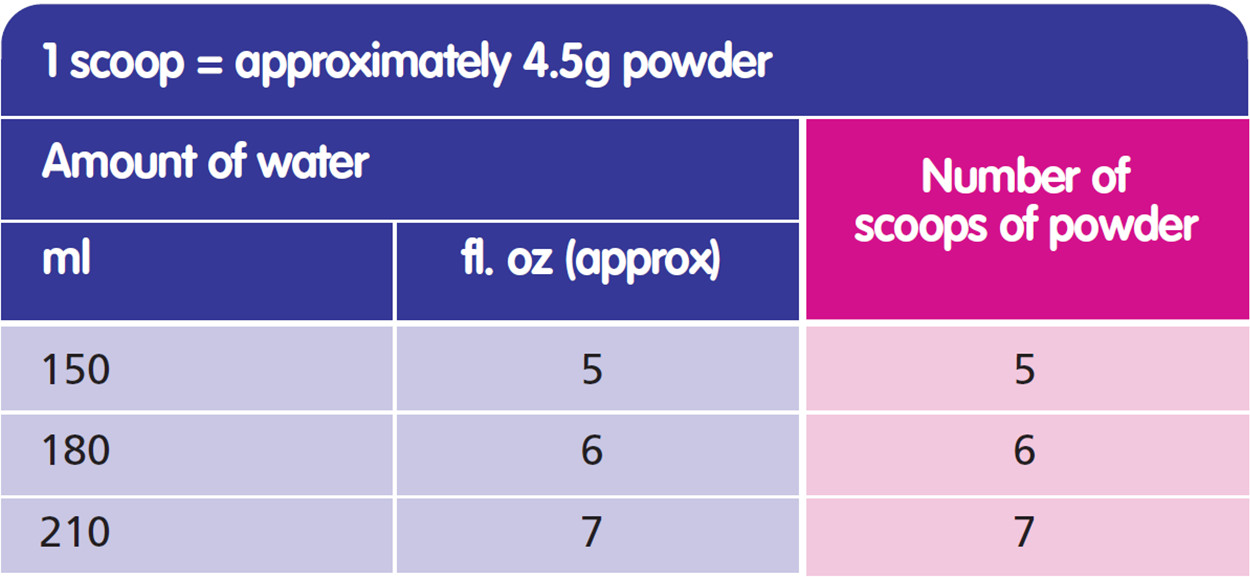Follow-on milks
In 6-12 months
Follow this topic
Bookmark
Record learning outcomes
From the age of six months, babies' nutritional requirements change to meet their bodies' growing demands. Solid food starts to play a role and follow-on milks can help to bridge any dietary gaps

Healthy babies will approximately triple their birthweight by 12 months of age, but to do this they need to consume energy rich and nutrient dense foods that are high in fat and low in fibre so that they don't feel full too quickly. The Department of Health recommends that full fat cows' milk should not be given to babies as a drink until 12 months of age because of its low iron and high sodium and protein content.
However, it can be used in food recipes. Infant formula milk or follow-on milk are therefore the only appropriate alternatives to breast milk for bottle-fed babies before 12 months.
Follow-on milks
Follow-on milks can be given to babies from six months of age to complement a healthy weaning diet. At this age, follow-on milks can be used as the main drink and when preparing foods containing milk (e.g. cereal or sauces). They contain a higher level of some key nutrients than infant formula milks, such as iron and vitamin D, to help meet the needs of infants at this age on a mixed weaning diet. (For details of a healthy weaning diet, see page 79.) Like infant formula milks, follow-on milks are manufactured by modifying cows' milk:
- The whey:casein ratio is altered
- Iron is added because a baby's stores of iron will have reduced by about six months of age, when weaning is first started. A significant proportion of a baby's iron needs can be met by follow-on milk
- Other key vitamins and minerals (e.g. vitamins A, C, D, E, calcium and zinc) are included because they are important for healthy development at this age
- Many follow-on milks also contain oligosaccharides and nucleotides for the development of a healthy gut and immune system.
IMPORTANT: Follow-on milks are intended to complement a weaning diet and should not be used as the only source of nutrition. However, as milk is still an important source of nutrition at this stage, they can act as a nutritional 'safety net' €“ reassuring parents if babies seem fussy or go through a difficult eating stage.
Preparing feeds
As with infant formula milk, follow-on milk should be made up as it is required, rather than in batches. This is because of possible bacterial growth in the milk during storage. It is therefore important that parents follow the instructions on how to make up a feed, as covered in the Equipment chapter. You should also remind parents of how important it is to use boiled water that has only been allowed to cool for 30 minutes. This will ensure that it is at the required minimum temperature of 70°C.
Keep sterilising!
Since milk provides ideal conditions for the growth of bacteria and is still a potential source of infection for babies in this age group, bottles and teats should continue to be sterilised until the baby's first birthday. Once a baby is using a cup, this doesn't need to be sterilised, but simply requires careful washing in hot, soapy water before being rinsed thoroughly in clean, running water. Alternatively, it can be washed in a dishwasher.
Vitamin supplements
The Department of Health recommends giving vitamins A, C and D to babies receiving:
- Breast milk as their main drink after six months
- Less than 500ml (a pint) of infant formula milk or follow-on milk per day from six to 12 months. Vitamin drops are available as part of the Healthy Start scheme.
Moving from bottle to cup
From six months of age, parents should encourage their baby to drink from an open cup or a freeflow cup without a valve as this will help the baby learn to sip rather than suck, which is better for the teeth. Comfort sucking on sweetened drinks is the biggest cause of tooth decay in young children. When using a bottle or trainer cup, nothing other than infant formula, breast milk or water should be put into it.
Advise parents that they may need to try a few cups before finding one that suits their baby. By 12 months of age, babies should have stopped using bottles with teats.
Top tips for introducing a cup
- A lidded beaker without a valve is best. Valves, like bottles, require babies to suck €“ the habit we are trying to break by introducing a cup
- When drinks are offered in a cup, all bottles should be kept out of the baby's sight
- Initially, it's best to offer the cup with one meal in the day when the baby is not tired
- Ensure the baby is seated upright, at a table or in a highchair, before offering a cup so that they are in a good drinking position
- Once they are used to one cup a day, others can gradually be introduced
- The bottle that the baby is most reliant on (often the one at bedtime) should be replaced last.
Example on-pack feeding guide*

N.B. All babies are different, but customers should try to ensure that once weaning is established, babies of six to 12 months should have 500ml (a pint) of follow-on milk a day, either as a drink, on cereals or mixed with food.
Mix one scoop of powder with 30ml (approx. 1fl. oz.) of water.
*Powder weights vary by brand, so always check the instructions on pack.
Further information:
- NHS: Drinks and cups for children
- Aptamil Professional: Moving from bottle to beaker
- SMA: Moving from bottle to cup
Read all the articles in this section? Now test your knowledge and add this to your learning log.
